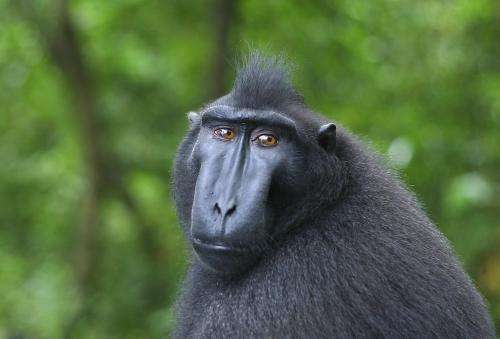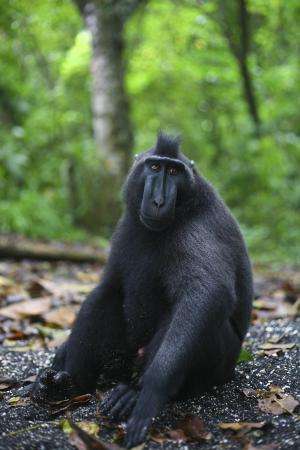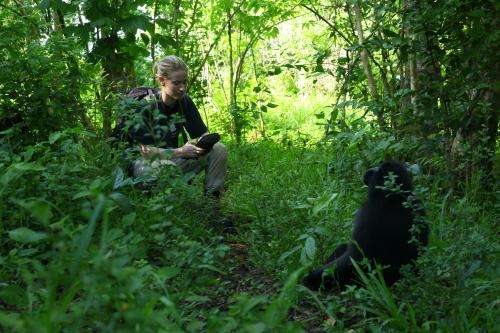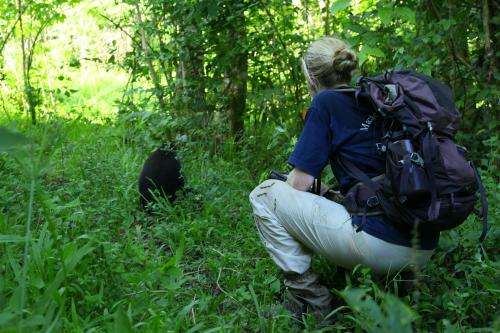Study considers how coalition-building by monkeys relates to human social structures

Despite his yellow teeth, orange eyes and odd spiky 'do, the crested black macaque is undeniably engaging, not the least to primatologist Maura Tyrrell, a PhD candidate in the University at Buffalo Graduate Program in Evolution, Ecology and Behavior.
Intelligent and playful in their tiny-tailed, Old World monkey way, the males of this highly endangered species have been the subject of Tyrrell's research since 2011.
Tyrrell recently received a coveted research grant from the Leakey Foundation to support her 15-month study of social relationships between 20 wild adult male crested macaques (Macaca nigra) in different troops at the Tangkoko Nature Reserve on the Indonesian island of Sulawesi.
The Leakey Foundation is named for Louis and Mary Leakey, the great paleoanthropologists and archaeologists who fostered field research of primates in their natural habitats, which they considered key to unraveling the mysteries of human evolution. To that end, it has supported the work of such primatologists as Dian Fossey and Jane Goodall, the latter of whom has long been a role model for Tyrrell.
In her research, Tyrrell is examining coalition behavior between crested black males in different competitive contexts with an eye to what they can tell us about the evolution of social structures.
"Coalition-building must have been very important in the development of the political and social structures of early humans," Tyrrell says. "How, why and when these behaviors arose among primates may tell us something about later hominid (including human) social evolution."
She explains that the M. nigra is one of 22 species of macaques, a genus of Old World monkeys, and are found only on Sulawesi and one other Indonesian island. They are in danger of extinction because of loss of habitat, and their status as both agricultural pests and a popular bush meat.
This is unfortunate because they have much to tell us.
"If I find that there are some elements of coalition behavior that are common to macaques, chimpanzees and humans," she says, "it may be that some aspects of human coalitionary behavior had their origins in the common ancestors of Old World monkeys, apes and humans."
Tyrrell's mentor is the highly regarded primatologist Carol Berman, PhD, professor of anthropology at UB and a specialist in macaques' intricate social structures and behavior.She says, "Prior research has considered male coalition-building in monkeys as a way to deal with competition within troops of nonhuman primates, but Maura is looking into the possibility that male monkeys also form coalitions to deal with incursions by outsiders."

Tyrrell began her observational studies with the crested black macaques in the Buffalo Zoo, whose behavior, she says, is very close to what it is in the wild.
Three years later, she continued this work as a research assistant at the Macaca Nigra Project on Sulawesi, a collaborative venture between the German Primate Center and two Indonesian universities.

The Leakey Foundation grant will permit her to be back in Indonesia, testing her theses by following 20 males macaques in three habituated troops in their natural habitat for about 15 months.
"I want to create a clearer picture of social relationships among crested macaques to help broaden our understanding of how early human male alliances may have evolved," Tyrrell says.

Provided by University at Buffalo














